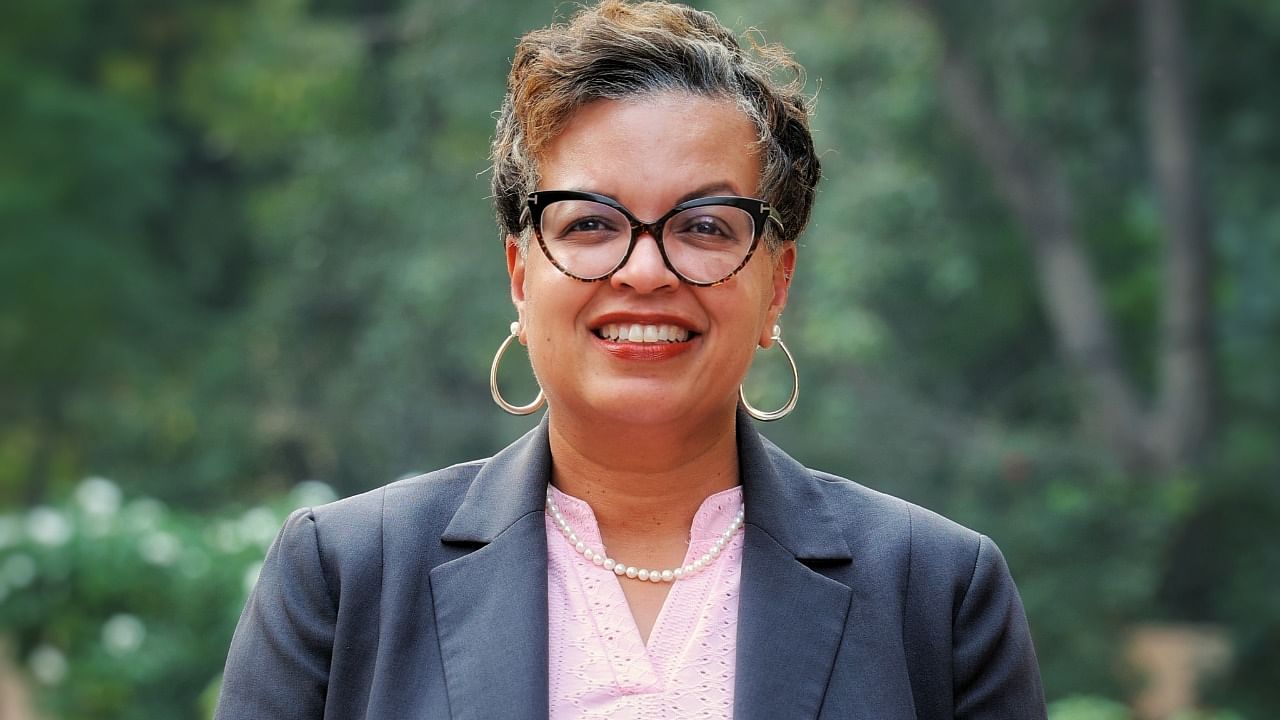
LaTrease Garrison, COO of the American Chemical Society.
Credit: Special Arrangement
The STEM stream’s greatest competitor is computer science, says LaTrease Garrison, COO of the American Chemical Society. In a recent interview with DH’s Shashikala M S, Garrison talks about the need for chemistry to remain relevant and accessible. Excerpts:
What trends do you see emerging in STEM education, and how are these trends influencing global education and competitiveness?
ACS is looking at how chemistry is taught and how to make it more accessible to a diverse set of students. Our aim is to make it so relevant that students can immediately see how chemistry is essential and how it works to solve problems faced by the world.
Speaking of trends, green chemistry and sustainability are big. Promoting STEM education at an early age is another thing we are witnessing worldwide, as we are in India. If we do not do this, the chances of students taking STEM in higher education are slim. One of our competitors is computer science. Children can easily see computer science in action in their everyday lives. So we need to look at the hands-on aspect of chemistry and make science as accessible and tangible as computer science is.
We need to engage with families, especially the parents, as they can share information, and encourage their children in terms of what they pursue at the university and as their profession later. We have science outreach programmes and hands-on activities to bring the community together. We realise that we need to speak plain English around science to make it more attractive.
There are many India-US science partnerships. Is it driven by the geopolitical coming together of India and the US? Or, is it that fewer Americans than Indians are interested in STEM fields?
I would say that the United Nations’ SDG has provided a space for chemists globally to come together to address global challenges. I wouldn’t say that there is a diminishing interest in STEM or that there are fewer American students interested in STEM or chemistry. The interest is becoming more global than it was in the past, and technology is allowing people to connect. We are forced to come together as humans, and universities, industries, and organisations are recognising this. It is not so much about competition as how we advance the chemical sciences collectively. It is also the coming together of global forces to further the cause of the UN’s Sustainable Development Goal 4, which is to ensure inclusive and equitable quality education.
What are your strategic and specific interests and goals in India?
We are building new programmes and looking at ways to engage our members here in India and other countries. We are launching a virtual internship programme for students to gain experience and knowledge outside of the classroom. They have a chance to leverage some of our concepts through our publications and take our courses at the ACS institute. Our student as well as professional chapters are able to provide localised programmes and opportunities.
Being in India has given ACS an opportunity to look at other regions of the world and develop international activities as well. It is a hub for us to innovate and a great space to develop programmes for the international community.
What is your approach to open science and knowledge sharing, and recommendations for fostering open access and collaboration with Indian institutions?
ACS currently offers open and accessible research data products. It is important to design and build a global technical infrastructure that will increase the reusability of primary research data associated with ACS journal articles, including improving text and data mining capabilities. We’re committed to enhancing our open science initiatives to make it easier for authors to widely share their research.
What are ACS’ initiatives in interdisciplinary research?
As the lines of traditional scientific disciplines continue to blur, interdisciplinary research remains at the forefront of how ACS approaches scientific information. When you think about any major manufacturing company or an academic lab, making and taking a product to market takes more than a “traditional” chemist and takes people from all backgrounds. One of the strategic initiatives of ACS, for example, is to enable seamless collaboration between chemists and molecular biologists to accelerate innovation in drug discovery and development.
How is ACS addressing environmental and sustainability concerns? Where does India come in on this?
Recently, we established an office of sustainability to build more resources around sustainability and develop a worldwide initiative. We hold sustainability summits, which are also open virtually to a worldwide audience, bringing together researchers to think about how chemistry addresses the world’s challenges.
We are also instituting sustainability grants that will help institutions bring more professionals into their laboratories to further their advanced research on sustainability. This is to have resources in place for early-career chemists who are interested in entering the sustainability space.
In India, we are looking to partner with organisations to hold sustainability conferences and provide sustainability grants to further research.
We are in the process of developing a collaborative platform to bring together partners around sustainability. It’s all relatively new, and we are entering our second year of these initiatives. We also have journal editors from India.